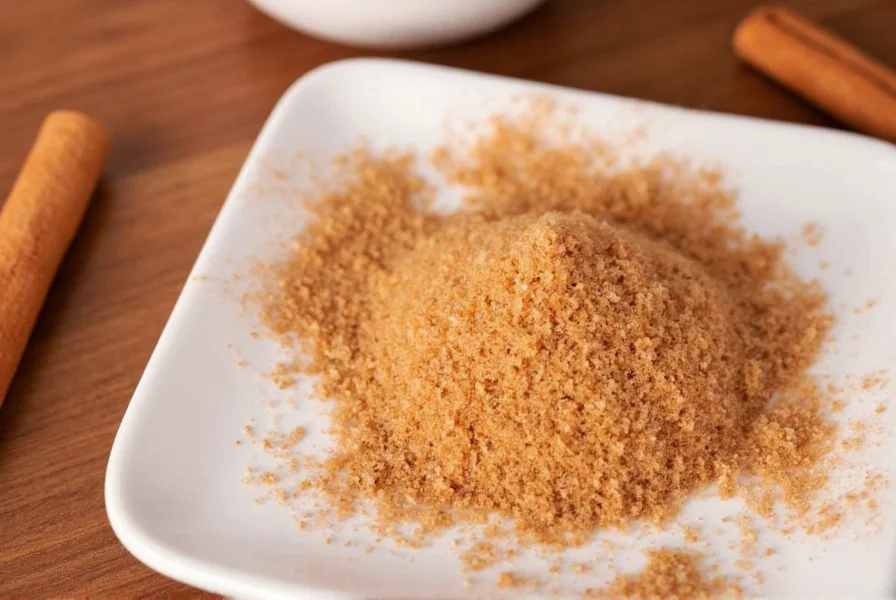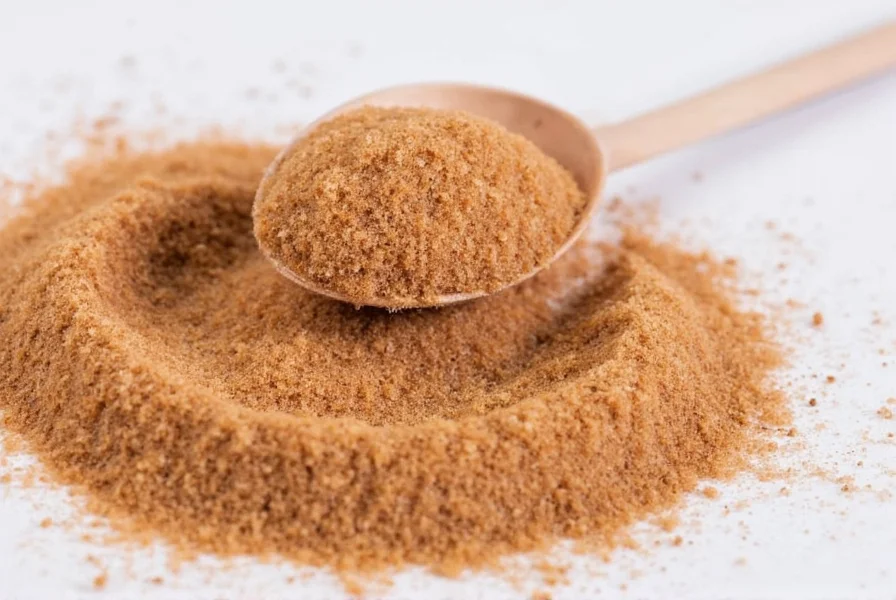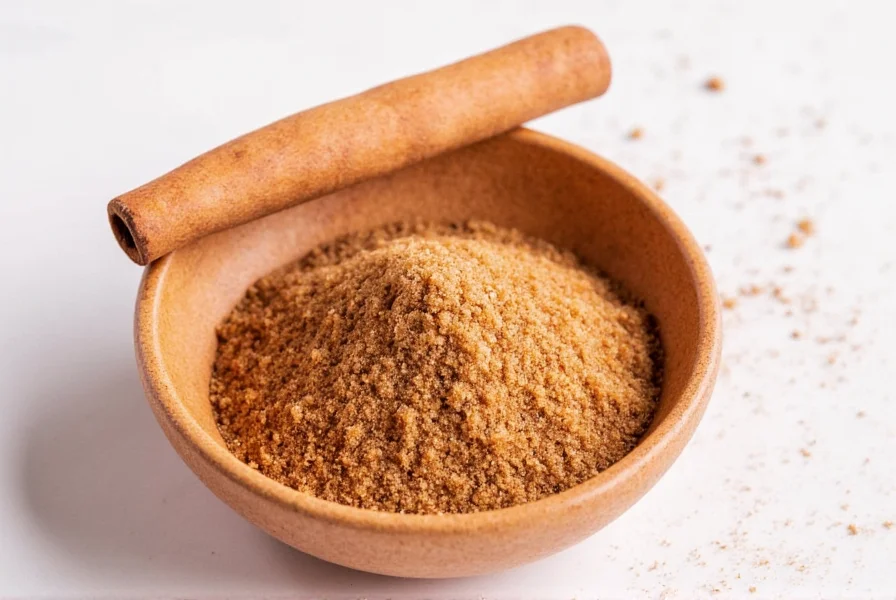Cinnamon sugar represents one of the most versatile pantry staples you can create with just two ingredients. This aromatic blend enhances everything from morning toast to evening desserts with its distinctive sweet-spicy profile. Understanding the proper ratio, ingredient selection, and applications transforms ordinary recipes into extraordinary culinary experiences.
The Perfect Cinnamon Sugar Ratio Explained
While many recipes suggest a standard ratio, the ideal cinnamon to sugar proportion depends on your taste preferences and intended use. The traditional 1:4 ratio provides balanced flavor without overwhelming sweetness or spice. However, certain applications benefit from adjustments to this standard formula.
| Application | Recommended Ratio (Cinnamon:Sugar) | Flavor Profile |
|---|---|---|
| General baking | 1:4 | Balanced sweetness with subtle warmth |
| Coffee or tea sweetener | 1:6 | Mild spice that complements beverages |
| Cinnamon rolls or sticky buns | 1:3 | Bolder cinnamon presence |
| Dusting for churros or fried pastries | 1:2 | Intense spice that stands up to frying |
How to Make Cinnamon Sugar: Step-by-Step
Creating homemade cinnamon sugar takes mere minutes and yields superior results compared to store-bought versions. The freshness of ingredients makes a noticeable difference in flavor intensity.
- Measure your ingredients using a kitchen scale for precision (volume measurements can vary significantly)
- Combine cinnamon and sugar in an airtight container
- Seal container tightly and shake vigorously for 30-60 seconds
- Test a small amount and adjust ratio if needed
- Store in a cool, dark place away from moisture
For optimal flavor distribution, sift the mixture through a fine mesh sieve after combining. This prevents clumping and ensures even dispersion of cinnamon throughout the sugar.

Choosing the Right Cinnamon for Your Blend
Not all cinnamon varieties work equally well in cinnamon sugar. Understanding the differences helps you select the appropriate type for your intended use:
- Ceylon cinnamon ("true cinnamon") offers delicate, complex flavor with citrus notes - ideal for subtle applications like custards or light pastries
- Cassia cinnamon provides stronger, more intense heat - perfect for robust applications like coffee cakes or spiced cookies
- Saigon cinnamon delivers maximum spice intensity - use sparingly in recipes requiring bold cinnamon presence
- Indonesian cinnamon offers mild, woody flavor - works well in beverages where you want cinnamon presence without overwhelming other flavors
For most home applications, cassia cinnamon provides the familiar cinnamon sugar flavor most people recognize from childhood treats. Its stronger profile stands up well to baking processes that can diminish more delicate spices.
Sugar Options for Cinnamon Sugar Blends
While granulated white sugar remains the standard base, experimenting with different sugars creates unique flavor dimensions:
- Granulated white sugar - neutral base that lets cinnamon shine
- Superfine/caster sugar - dissolves more readily in beverages
- Light brown sugar - adds caramel notes that complement cinnamon's warmth
- Coconut sugar - provides deeper molasses flavor with lower glycemic impact
- Powdered sugar - creates dusting blends for immediate incorporation
When using brown sugars, reduce the ratio to 1:5 (cinnamon to sugar) as the molasses content intensifies the overall sweetness perception. For powdered sugar blends, add 1/2 teaspoon cornstarch per cup to prevent caking.
Creative Uses for Cinnamon Sugar Beyond Baking
While cinnamon sugar traditionally appears on toast or in baked goods, modern applications extend far beyond these classic uses:
- Fruit enhancement - Sprinkle over sliced apples, pears, or bananas before broiling for a quick dessert
- Coffee and tea sweetener - Replace plain sugar for aromatic morning beverages
- Oatmeal topping - Stir into hot cereal along with fresh fruit
- Yogurt mix-in - Blend with plain yogurt and honey for instant flavored yogurt
- Cocktail rim - Moisten glass rim with citrus and dip in cinnamon sugar for spiced cocktails
- Popcorn seasoning - Toss with freshly popped corn and melted butter
- French toast coating - Dip bread in cinnamon sugar before cooking for extra crunch

Storage Tips for Maximum Freshness
Proper storage maintains cinnamon sugar's flavor and prevents clumping:
- Store in an airtight container away from heat and moisture
- Include a silica gel packet to absorb excess moisture
- Keep away from strong-smelling foods that might transfer odors
- Shake container before each use to redistribute ingredients
- Use within 3-6 months for optimal flavor (cinnamon loses potency over time)
If your blend develops clumps, place the container in a warm oven (under 170°F) for 10-15 minutes, then break apart clumps with a fork and sift before storing again. Never refrigerate cinnamon sugar as moisture causes permanent clumping.
Troubleshooting Common Cinnamon Sugar Issues
Even this simple blend can present challenges. Here's how to address common problems:
- Clumping - Caused by moisture exposure. Fix by drying in low oven and adding cornstarch (1/2 tsp per cup)
- Uneven distribution - Insufficient mixing. Always sift after combining ingredients
- Weak flavor - Old cinnamon or improper ratio. Use fresh spices and adjust ratio to taste
- Bitter aftertaste - Burnt during preparation or low-quality cinnamon. Start with fresh ingredients
- Color variation - Different cinnamon types produce varying hues. Cassia creates reddish-brown while Ceylon yields lighter tan
When to Adjust Your Cinnamon Sugar Approach
Certain recipes and situations call for modifications to the standard cinnamon sugar formula:
- High-altitude baking - Increase sugar slightly (to 1:4.5 ratio) as lower air pressure affects flavor perception
- Vegan applications - Ensure sugar is certified vegan (some white sugars use bone char in processing)
- Gluten-free baking - No adjustments needed, but verify cinnamon is processed in dedicated facility if cross-contamination is concern
- Reduced-sugar diets - Substitute half the sugar with erythritol or monk fruit sweetener
- Children's treats - Reduce ratio to 1:6 for milder flavor that won't overwhelm young palates
Professional bakers often maintain multiple cinnamon sugar blends for different applications rather than using a single standard mixture. This attention to detail creates more nuanced flavor profiles in finished products.
Conclusion
Cinnamon sugar's simplicity belies its culinary significance. By understanding the proper ratios, ingredient selections, and applications, you transform this basic blend into a versatile flavor enhancer. Whether you're dusting churros, sweetening coffee, or creating signature baked goods, customized cinnamon sugar elevates ordinary recipes into memorable culinary experiences. The key lies in matching your blend to its intended purpose rather than relying on a one-size-fits-all approach.
Frequently Asked Questions
What is the standard cinnamon to sugar ratio for most baking applications?
The standard ratio for most baking applications is 1 part cinnamon to 4 parts sugar. This provides balanced flavor that enhances baked goods without overwhelming sweetness or spice. For stronger cinnamon presence in items like cinnamon rolls, many bakers increase to a 1:3 ratio.
Can I use brown sugar instead of white sugar for cinnamon sugar?
Yes, you can substitute brown sugar for white sugar in cinnamon sugar blends. When using brown sugar, reduce the ratio to 1:5 (cinnamon to sugar) because the molasses content intensifies sweetness perception. Brown sugar versions work particularly well in recipes where you want deeper caramel notes, such as coffee cakes or spiced cookies.
How long does homemade cinnamon sugar last before losing flavor?
Homemade cinnamon sugar maintains optimal flavor for 3-6 months when stored properly in an airtight container away from heat and moisture. The cinnamon gradually loses potency over time, though the sugar remains safe to consume indefinitely. For best results, make small batches you'll use within 3 months and note the preparation date on the container.
Why does my cinnamon sugar keep clumping together?
Cinnamon sugar clumps due to moisture exposure. To prevent clumping, store your blend in an airtight container with a silica gel packet to absorb excess moisture. If clumping occurs, place the container in a warm oven (under 170°F) for 10-15 minutes, break apart clumps with a fork, and sift before storing again. Never refrigerate cinnamon sugar as the temperature changes introduce moisture.
What's the difference between Ceylon and Cassia cinnamon for making cinnamon sugar?
Ceylon cinnamon ("true cinnamon") offers delicate, complex flavor with citrus notes, making it ideal for subtle applications like custards. Cassia cinnamon provides stronger, more intense heat that stands up well to baking processes, creating the familiar cinnamon sugar flavor most people recognize. For most home baking applications, cassia cinnamon works best due to its bolder profile that maintains intensity during cooking.











 浙公网安备
33010002000092号
浙公网安备
33010002000092号 浙B2-20120091-4
浙B2-20120091-4